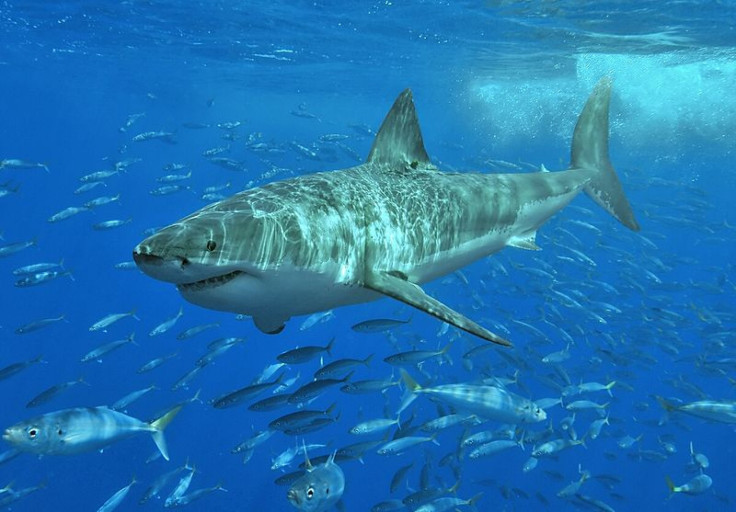Great White Sharks Use Liver Oil To Fuel Migrations, Have 'Outback Steakhouse' Seal Feasts Before Long Voyages

A new groundbreaking study has uncovered a secret behind great white sharks and their nonstop 2,500-mile journeys.
Scientists at Stanford University and the Monterey Bay Aquarium found that the predators power their journeys using fat and oil stored in their livers. While this has been true for animals such as birds and whales, this is the first time it has been proven in sharks, according to an article in Science Daily.
"We have a glimpse now of how white sharks come in from nutrient-poor areas offshore, feed where elephant seal populations are expanding -- much like going to an Outback Steakhouse -- and store the energy in their livers so they can move offshore again," researcher Barbara Block, a professor of marine sciences and a senior fellow at the Stanford Woods Institute for the Environment, said in a statement.
Similar to bears who fatten up to hibernate during winter months, great white sharks carry fat in their giant livers to make long voyages. Scientists came to this conclusion after studying a juvenile great white shark at the Monterey Bay Aquarium. Over time as the shark's body mass increased, so did its buoyancy, presumably due to the addition of stored oils in its liver.
Scientists used the data to track tagged great white sharks in the wild. Using their location, depth and water temperature, scientists were able to determine when the sharks were “drift diving” -- where the sharks let the ocean’s momentum carry them forward. If the sharks sank quickly, it meant less oil was stored.
"A well-fed shark becomes more buoyant as it increases the fat reserves in its liver, as fat is less dense than water," aquarium research scientist Sal Jorgensen told the Monterey Herald.
The study, published on July 17 in Proceedings of the Royal Society B, also provided clues as to why sharks travel great distances.
“Our study is another piece of mounting evidence that the major feeding point in the shark’s yearly cycle occurs along the coast," the study's lead author Gen Del Raye told Discovery News.
"Because we know that they are using up stored energy, it emphasizes the importance of their coastal periods where they feed at the elephant seal rookeries," said Del Raye, who is a researcher at Stanford University’s Hopkins Marine Station and the University of Hawaii. "Not only do they need to find enough energy to maintain their metabolism, they also have to find enough energy to fuel these long migrations."
© Copyright IBTimes 2024. All rights reserved.












